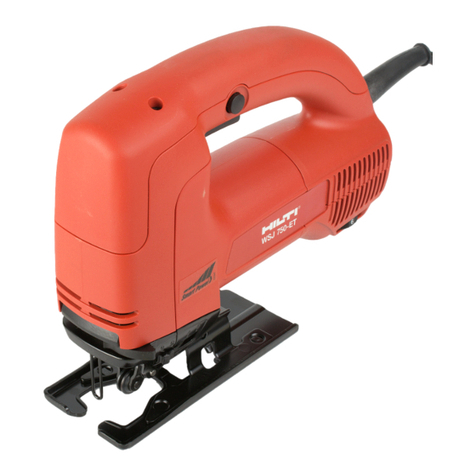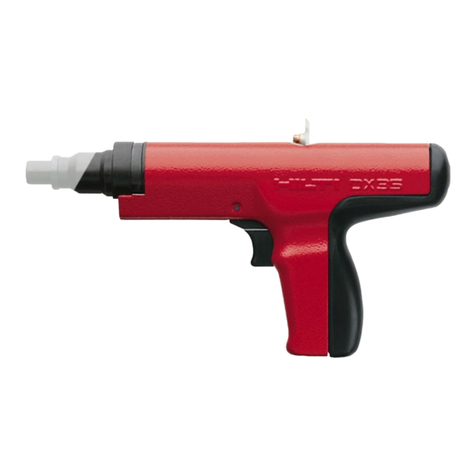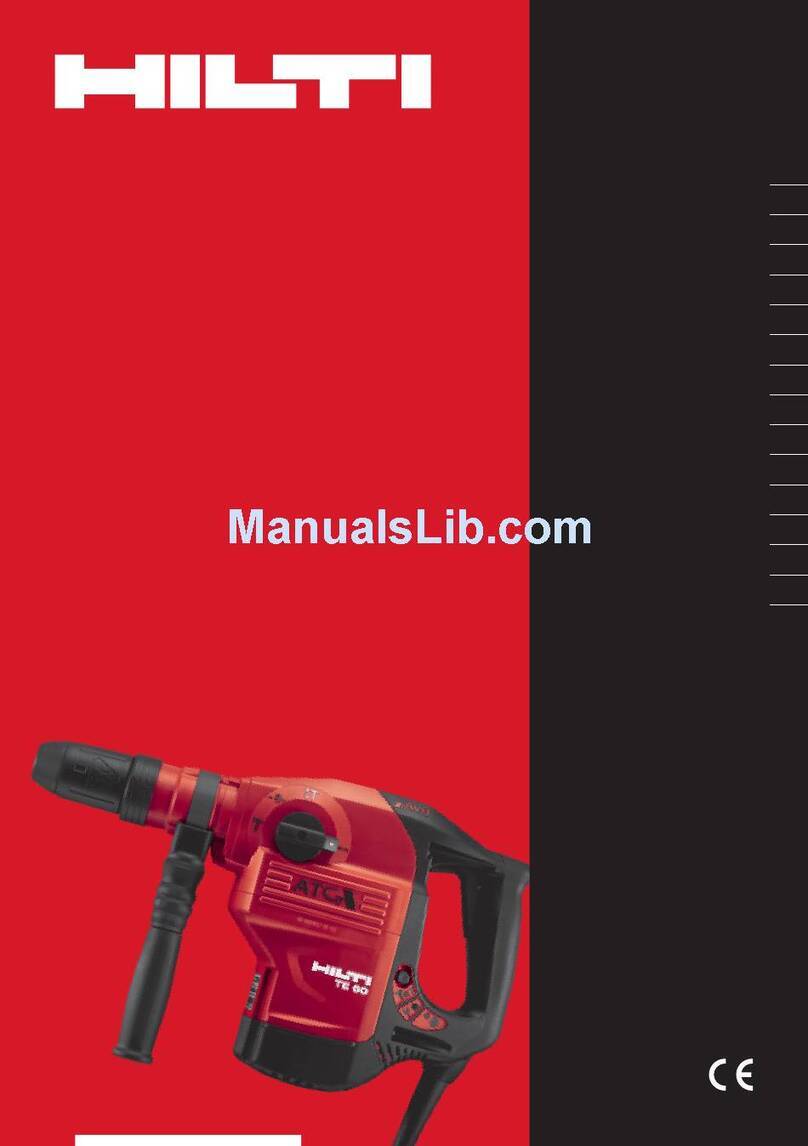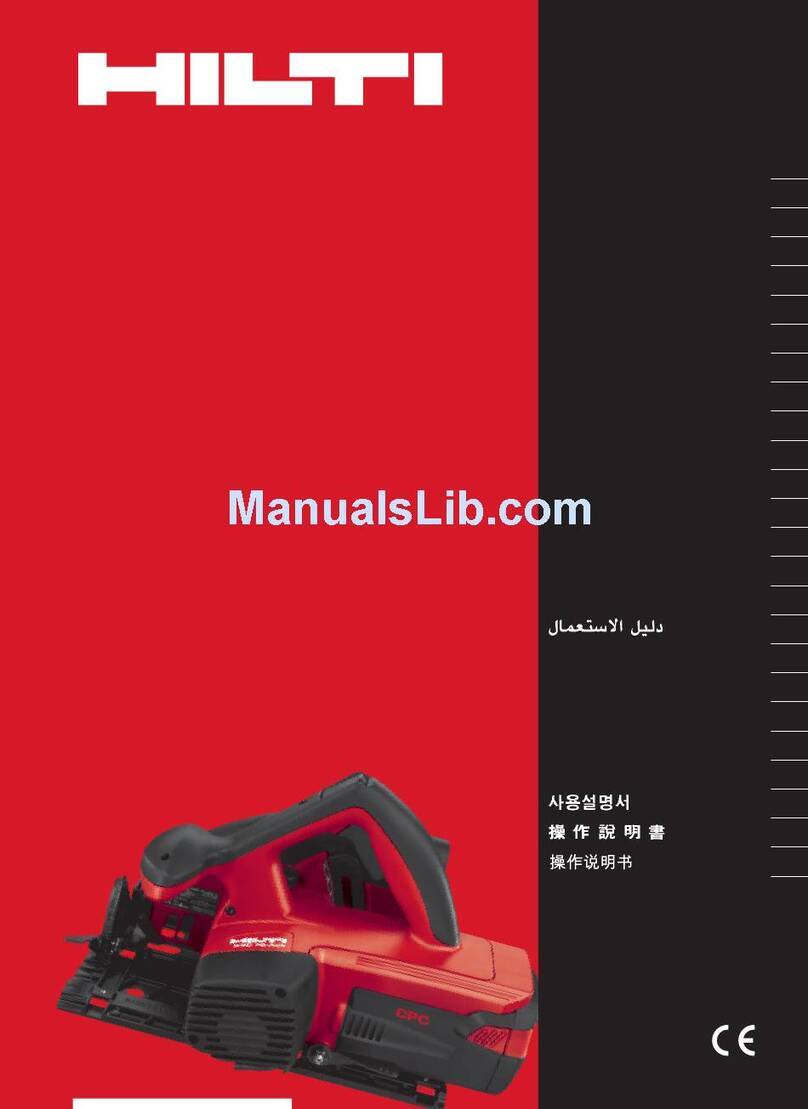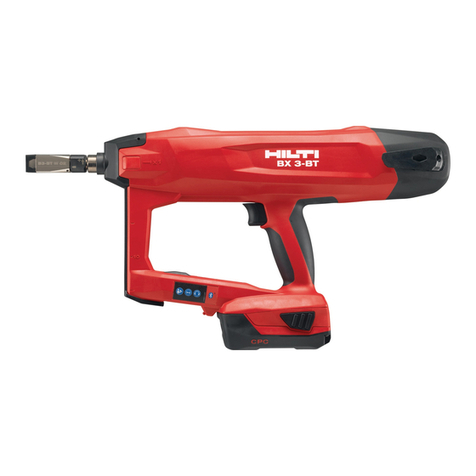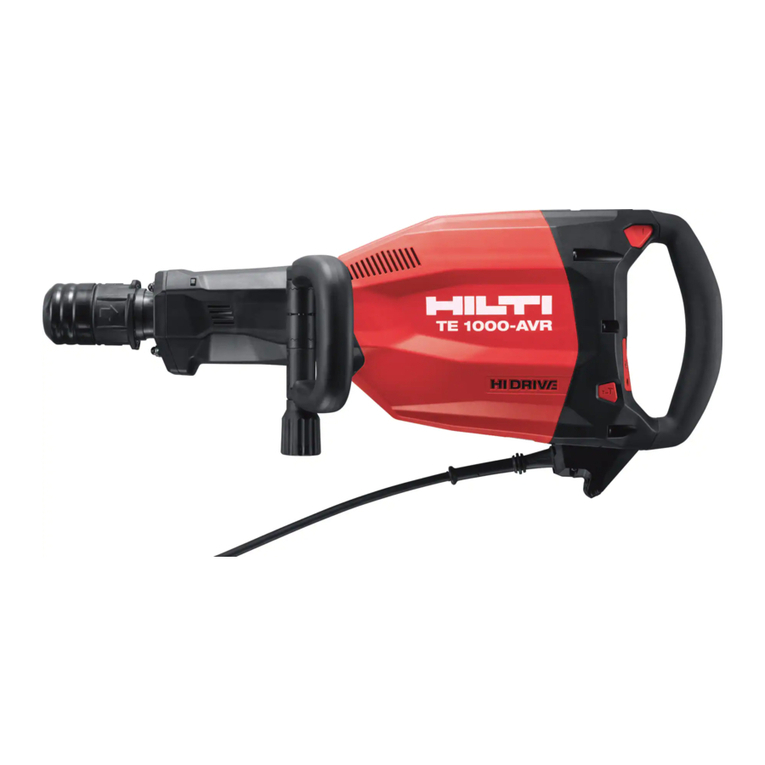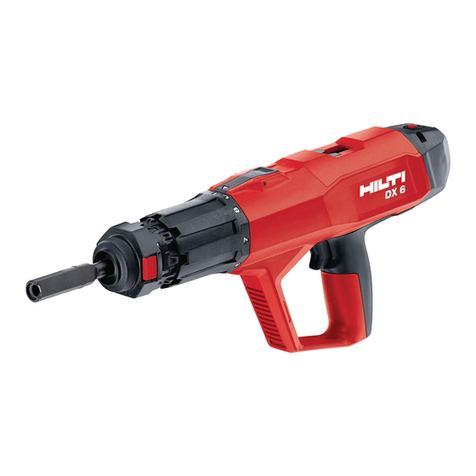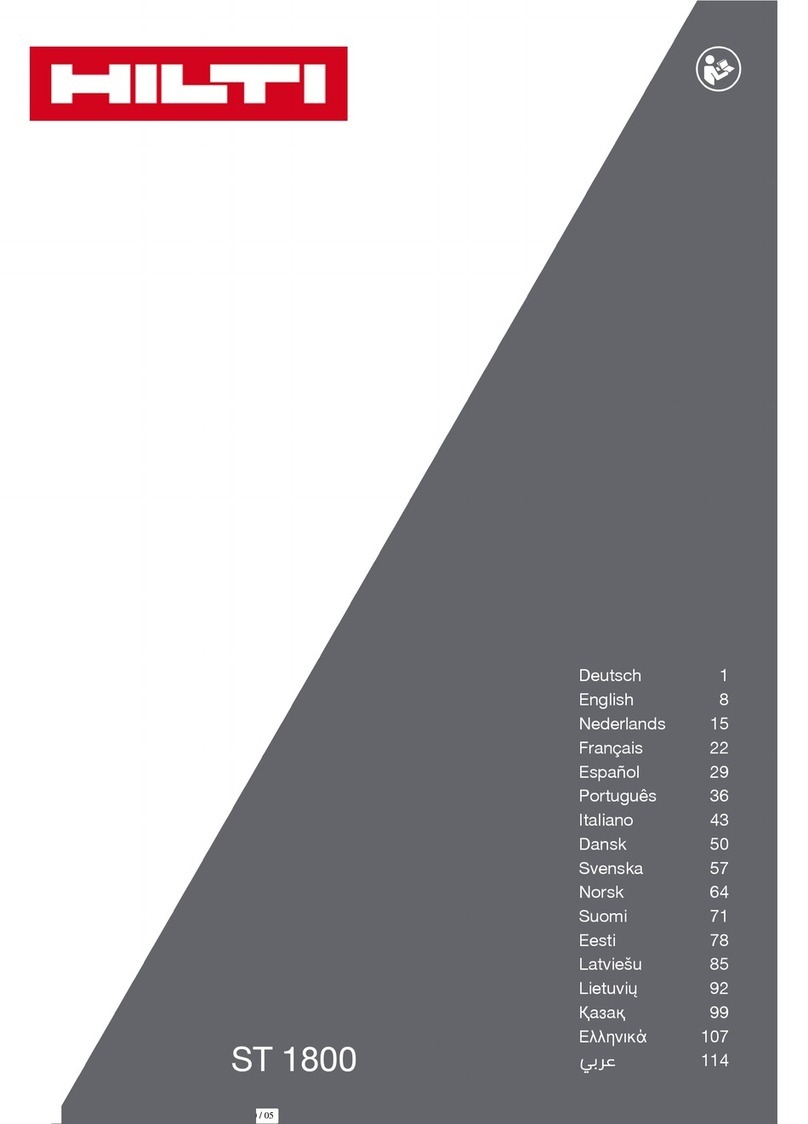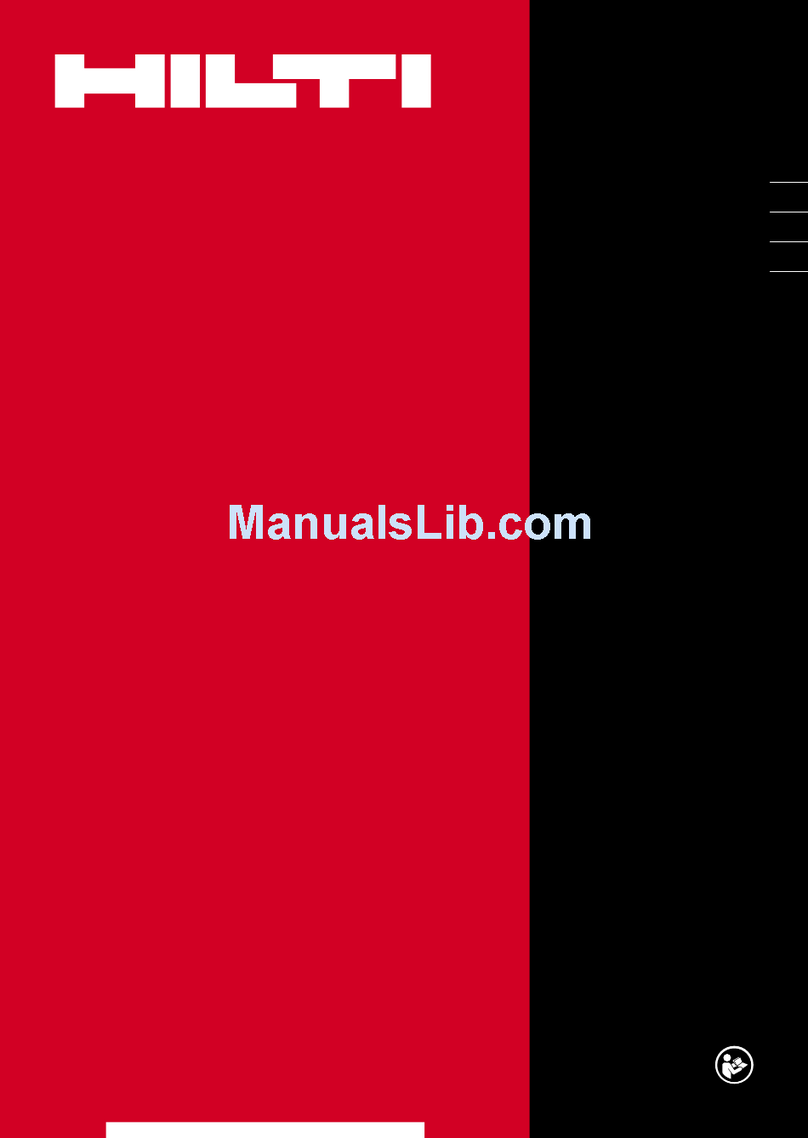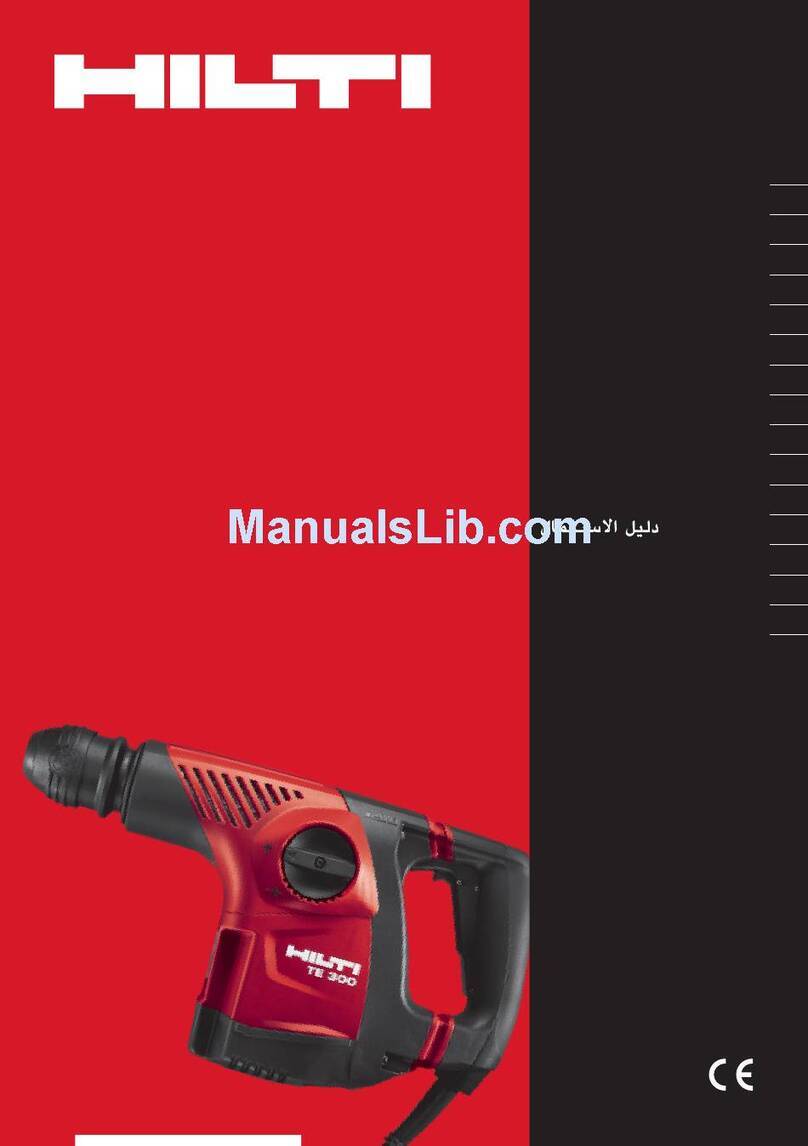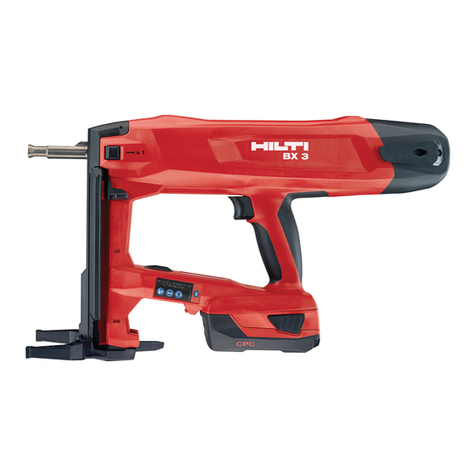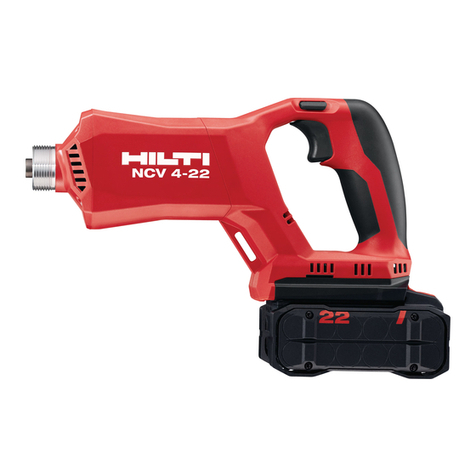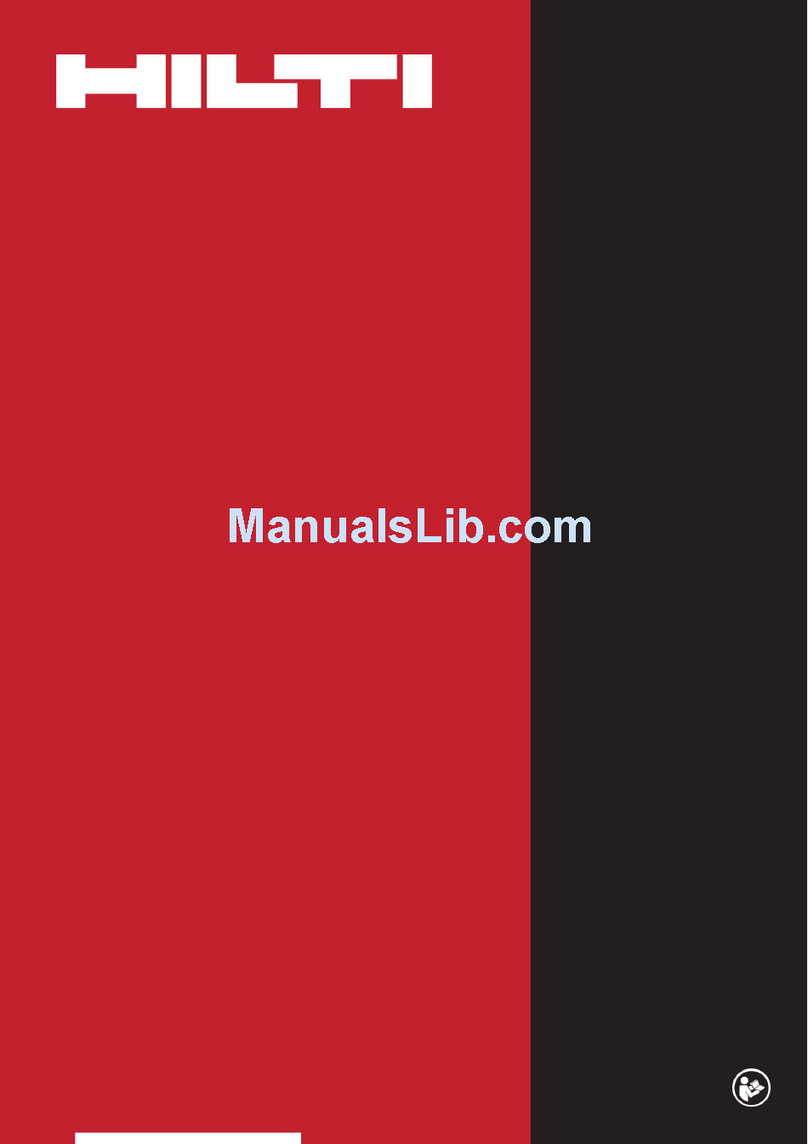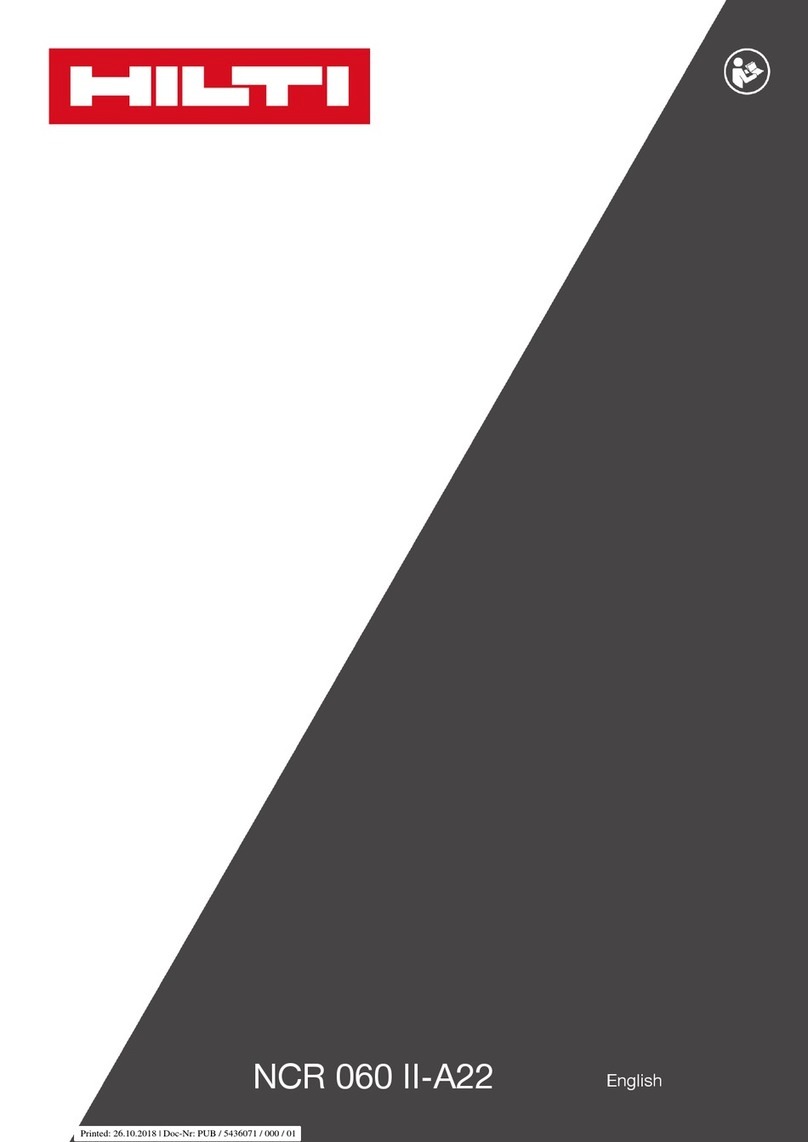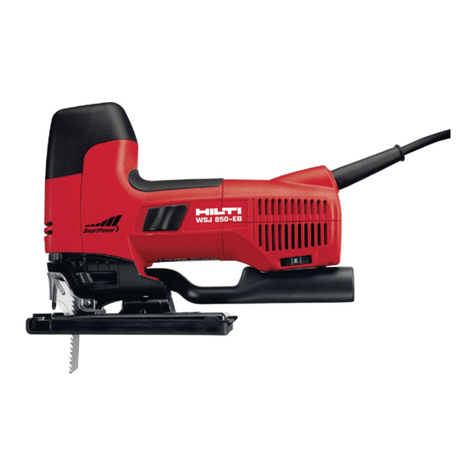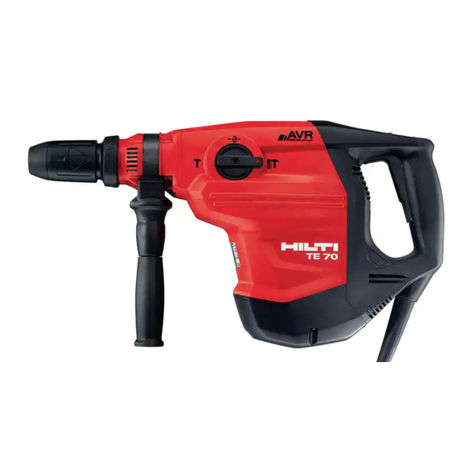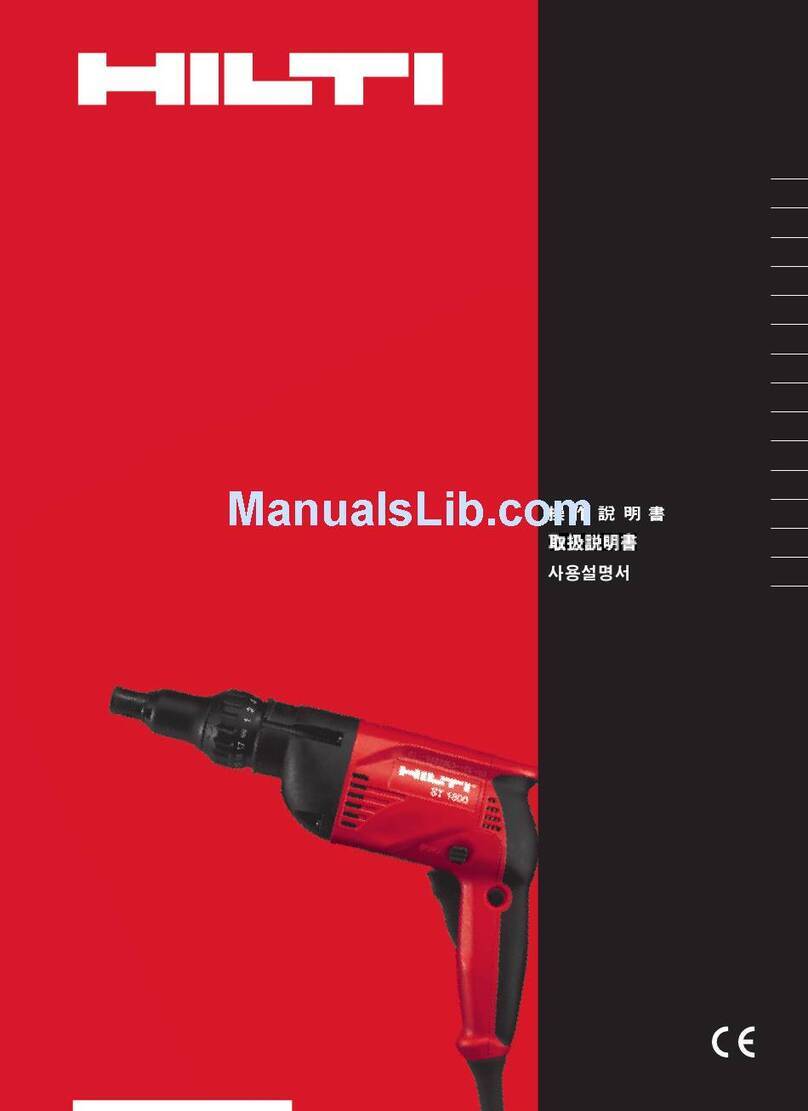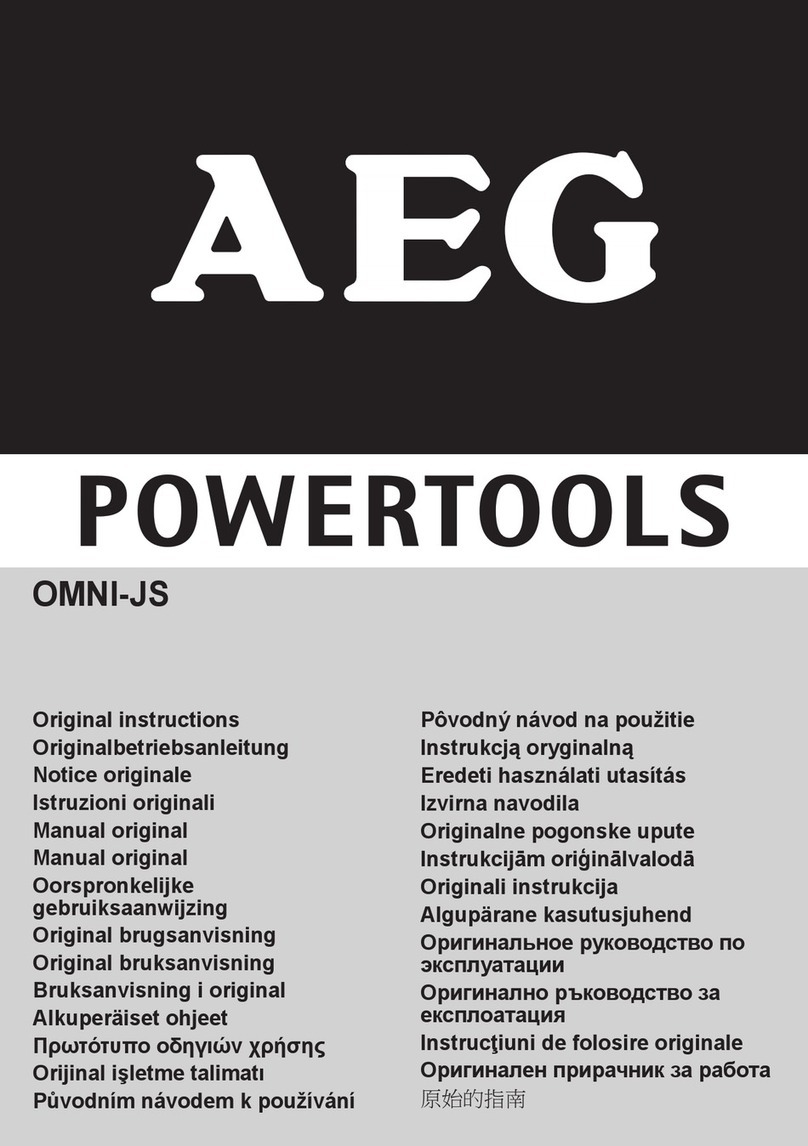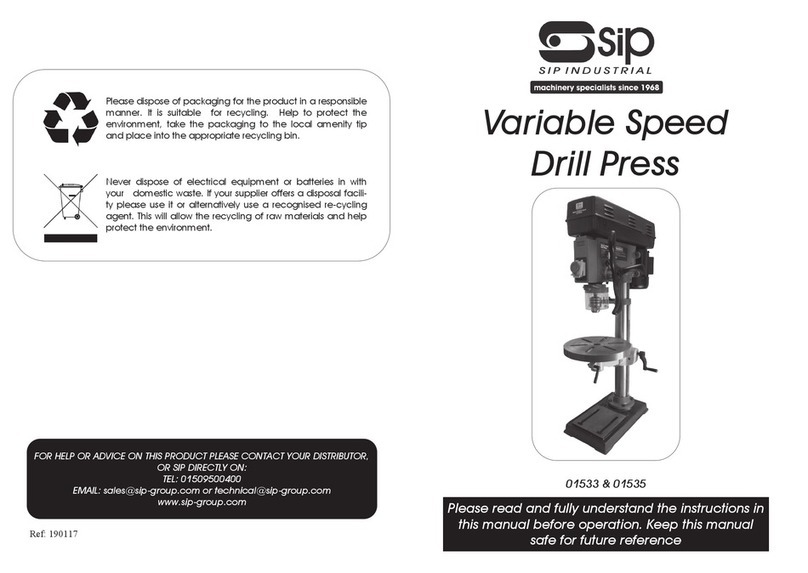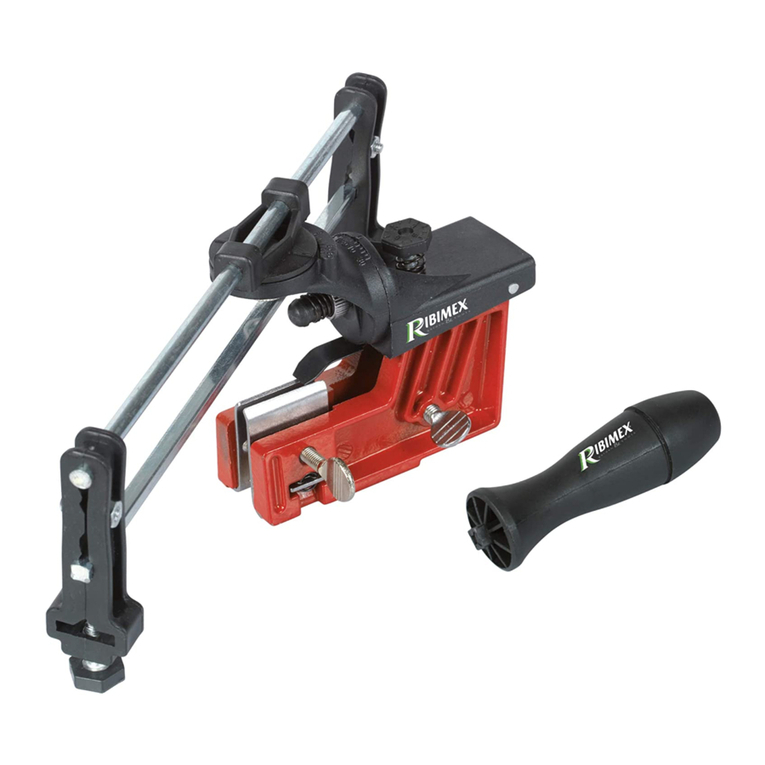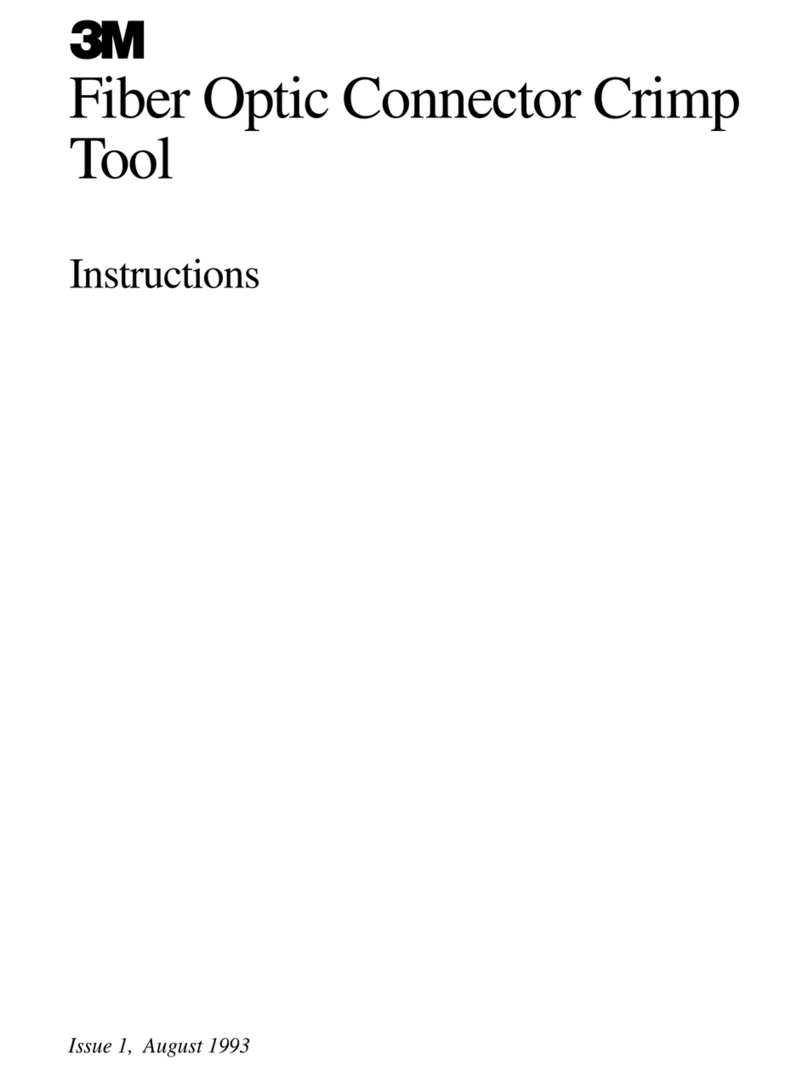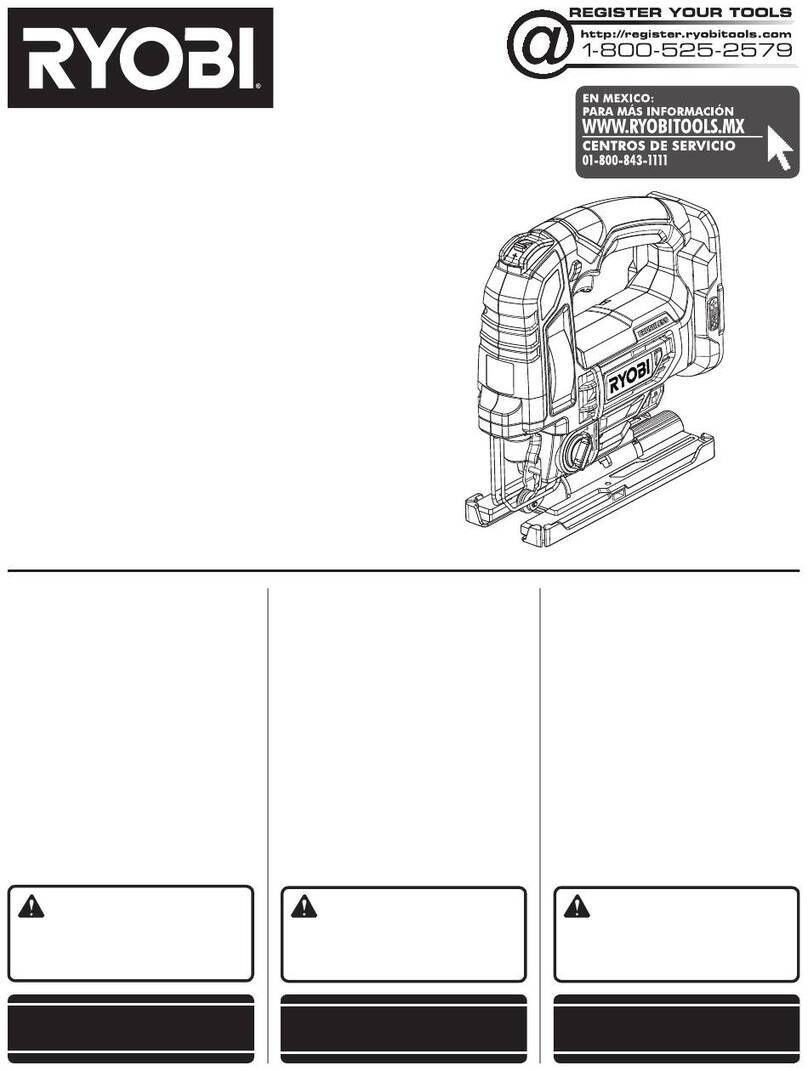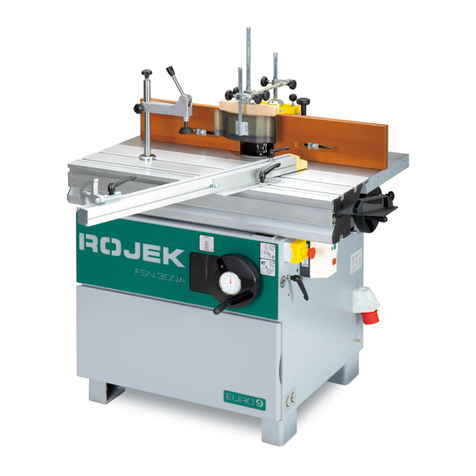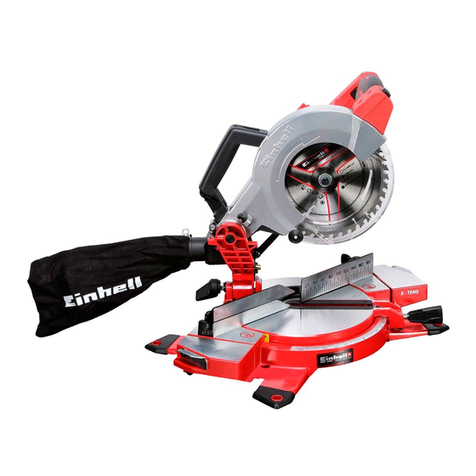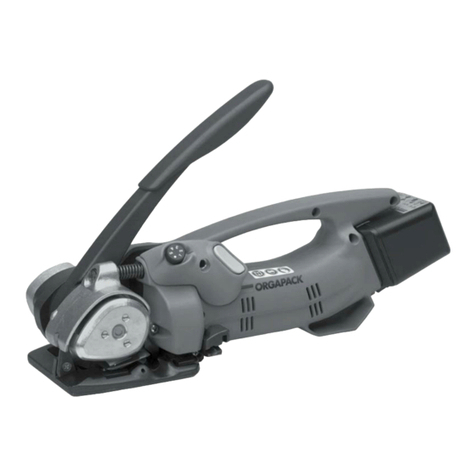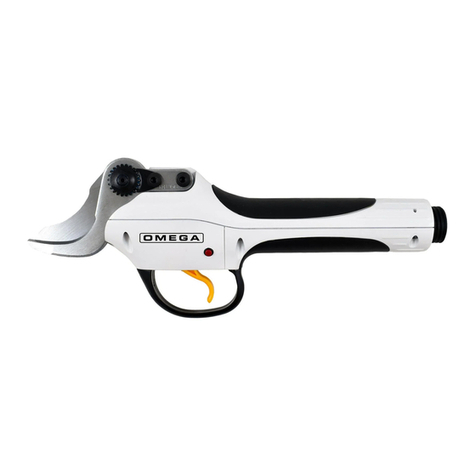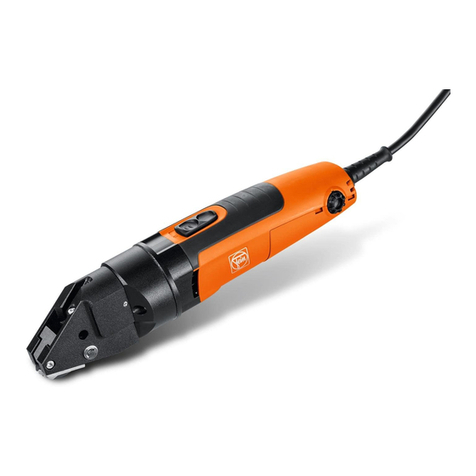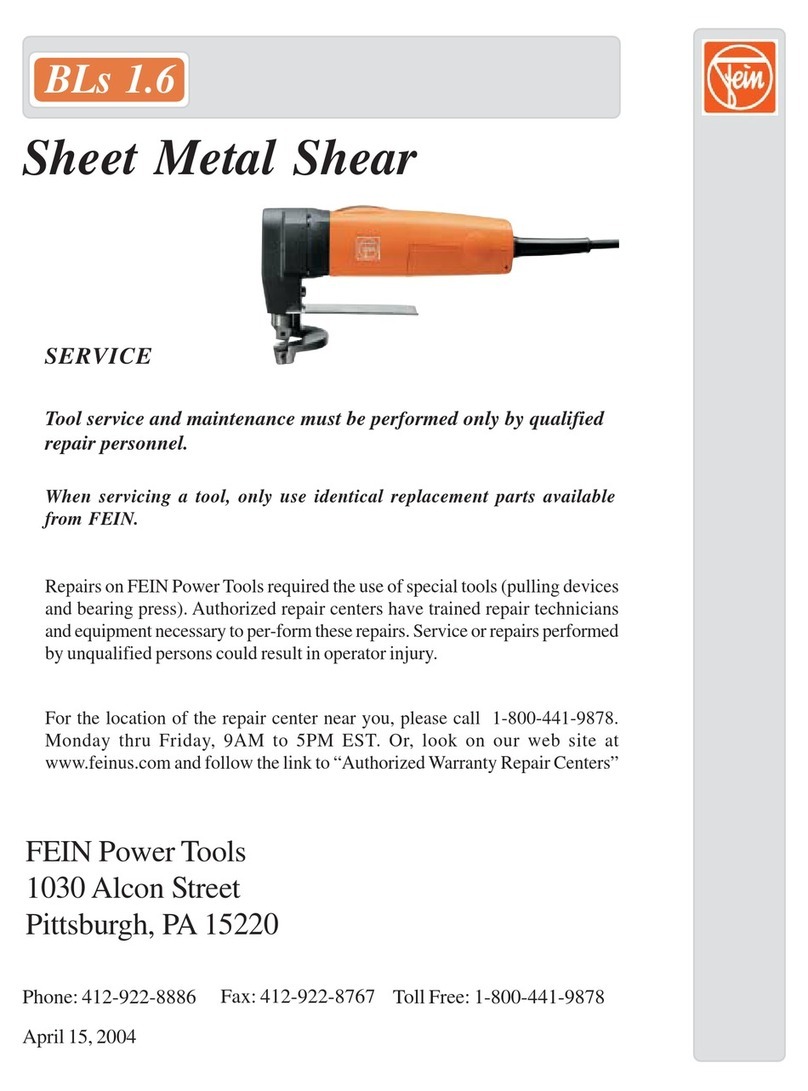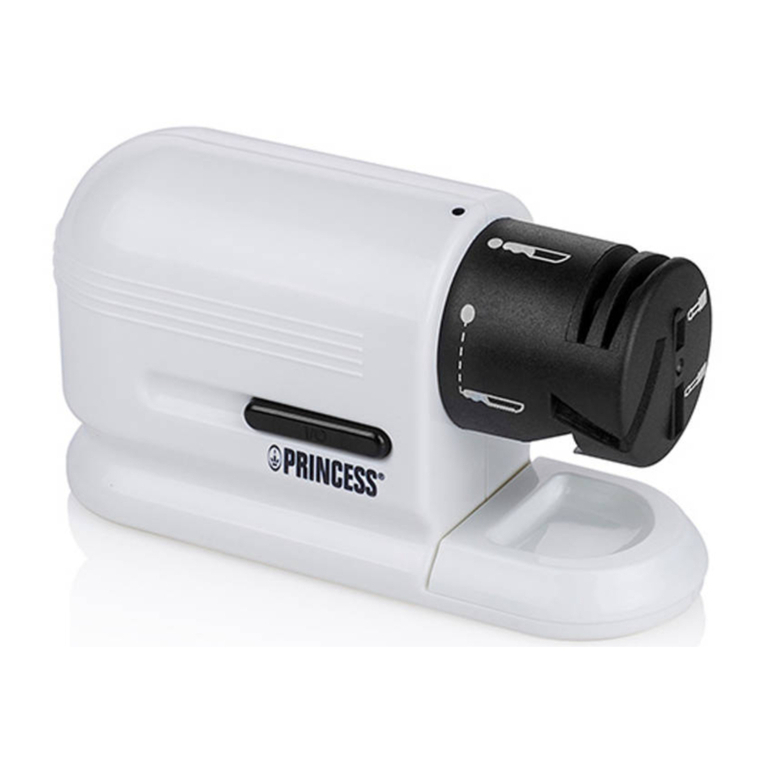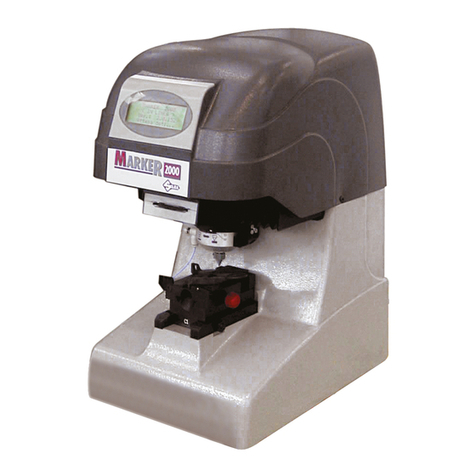8 | P a g e
The chiseling power level can be adjusted only when the tool is plugged in to the electric supply. Press the power level selector
switch again to return to full chiseling power.
Types of workRNING
Risk of electric shock! Severe injury and burns can result if any attempt is made to operate the tool without an earth/ground
conductor and ground fault circuit interrupter correctly connected.
Irrespective of whether mains power or generator power is used, always make sure that an earth/ground conductor and ground
fault circuit interrupter are present in the power supply and that these are correctly connected.
Do not use the product unless these safety measures are in place and fully operational.
WARNING
A damaged supply cord presents a hazard! Do not touch the supply cord or extension cord if damaged while working.
Disconnect the supply cord plug from the power outlet.
Check the appliance’s supply cord at regular intervals and have it replaced by a qualified specialist if found to be damaged.
Full approval must be obtained from the site engineer or architect prior to beginning the work.
Chiseling 5
1. Plug the supply cord into the power outlet. Working at low temperatures: The hammering mechanism works only when the
power tool has reached a minimum operating temperature. Bring the chisel into contact with the base material and allow the
power tool to run under no load until the minimum operating temperature is reached. If necessary, repeat this procedure until
the hammering mechanism begins to operate.
2. Bring the chisel into contact with the workpiece about 80 -100 mm (3¹⁄₈" - 4") from its edge.
3. To switch the power tool on, push the on/off switch to the right. ➥The on/off switch remains engaged in this position (on the
right).
4. To switch the power tool off, push the on/off switch to the left. ➥The on/off switch remains engaged in this position (on the
left). If inadequate pressure is applied, the chisel will jump around uncontrollably. Application of excessive pressure will result in
a loss of chiseling performance. When working close to reinforcing bars, always guide the tip of the chisel toward the edge of
the workpiece, not toward a reinforcing bar.
Care and Maintenance
Electric shock hazard! Attempting care and maintenance with the supply cord connected to a power outlet can lead to severe
injury and burns. Always unplug the supply cord before carrying out care and maintenance tasks.
Care
• Carefully remove any dirt that may be adhering to parts.
• Clean the air vents carefully with a dry brush.
• Use only a slightly damp cloth to clean the casing. Do not use cleaning agents containing silicone as these may attack the
plastic parts.
Maintenance
Danger of electric shock! Improper repairs to electrical components may lead to serious injuries including burns.
Repairs to the electrical section of the tool or appliance may be carried out only by trained electrical specialists.
Check all visible parts and controls for signs of damage at regular intervals and make sure that they all function correctly.
Do not operate the product if signs of damage are found or if parts malfunction. Contact Martello Hire & Logistics Ltd.
After cleaning and maintenance, fit all guards or protective devices and check that they function correctly. To help ensure safe
and reliable operation, use only genuine Hilti spare parts and consumables.
Transport and Storage
Transport
Do not transport this product with an accessory tool installed.
Make sure that the equipment is held securely throughout all transport operations.
After transporting, always check all visible parts and controls for signs of damage and make sure that they all function correctly.
Storage
Always store this product with the electric supply cable unplugged from the electricity supply.
Store this product in a dry place, where it cannot be accessed by children or unauthorized persons.
After a long period of storage, always check all visible parts and controls for signs of damage and make sure that they all function
correctly.
For a fully copy of the User Manual please visit www.martellohire.co.uk
